The Story of Uncle Doll
This is the story of James Walter Halford, who died in 1917 on the Belgium battlefields of the First World War.
We know very little about James the man, but through extensive research Chris has pieced together background information on the war and the specific circumstances that led to his death on the battefields of Belgium in 1917.
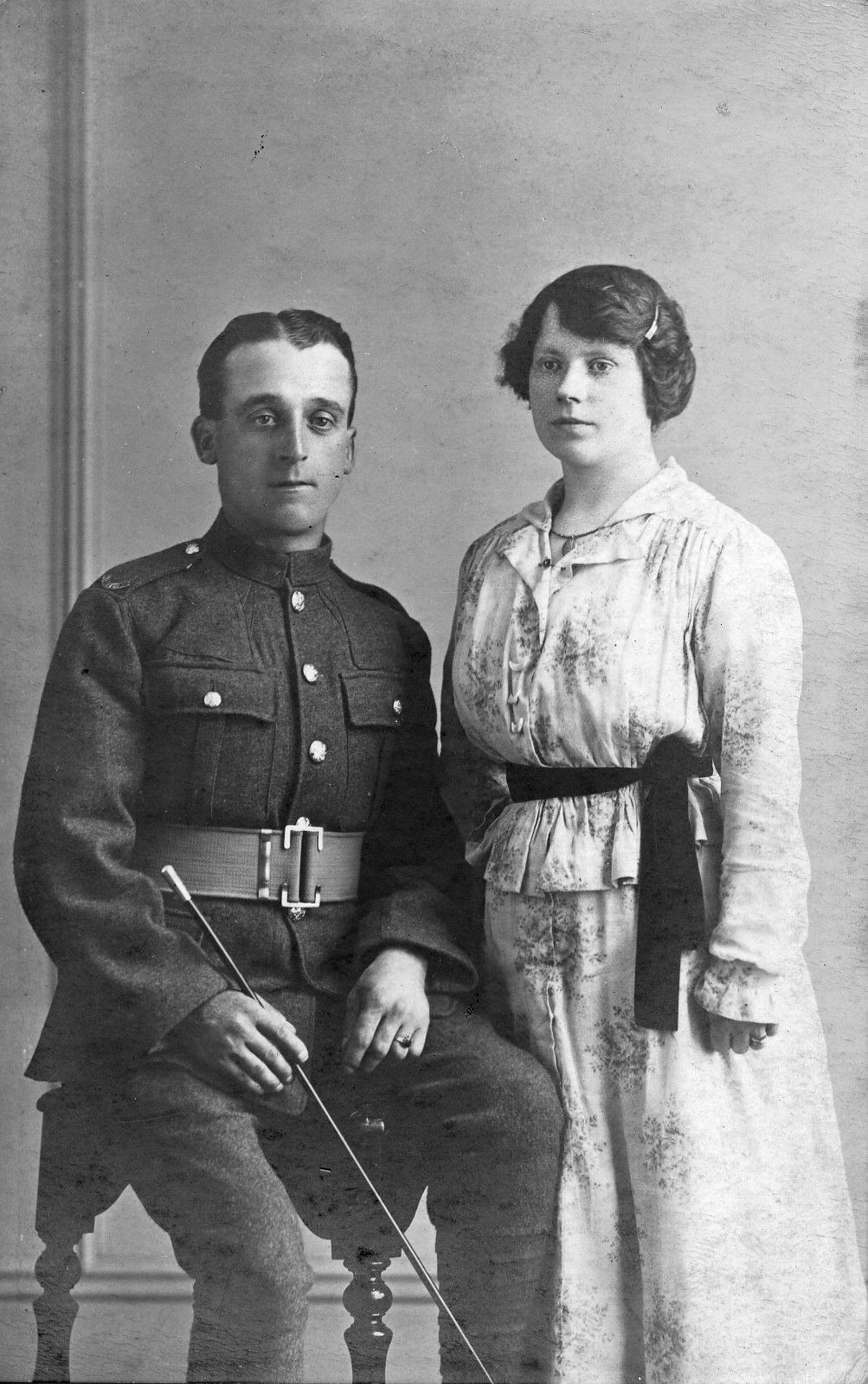
James Walter Halford and Annie, 1916
James Walter Halford was born in April 1882 in Warrington, which was then in Lancashire. He attended Heathside School in Warrington and later worked at the Bewsey Wire Ropery Company.
In the family he gained the nickname “Uncle Doll”, quite why isn’t clear, although we do know he was only 5 foot 1 inch tall.
His relationship to our family is shown in this family tree:
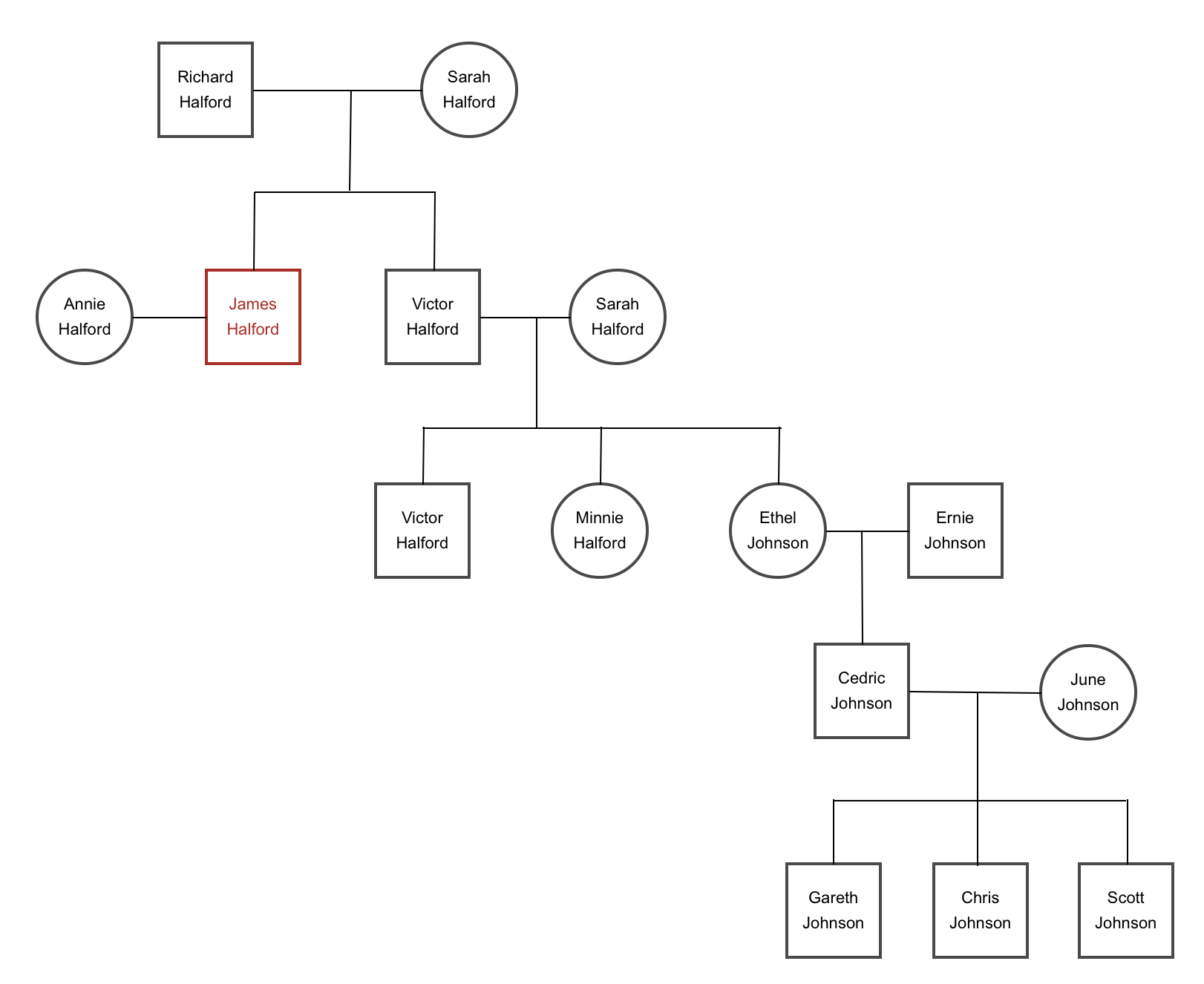
On 16th March 1912 he married Annie and they lived together at 48 Walker Street, Warrington.
The First World War broke out on 28th July 1914, although initially there was no conscription and no expectation that the war would last very long. By the autumn of 1915, with no end in sight to the war, the military needed more recruits. The ‘Derby Scheme’ was introduced to encourage young men to enlist, named after the Director General of Recruiting, Edward Stanley, 17th Earl of Derby.
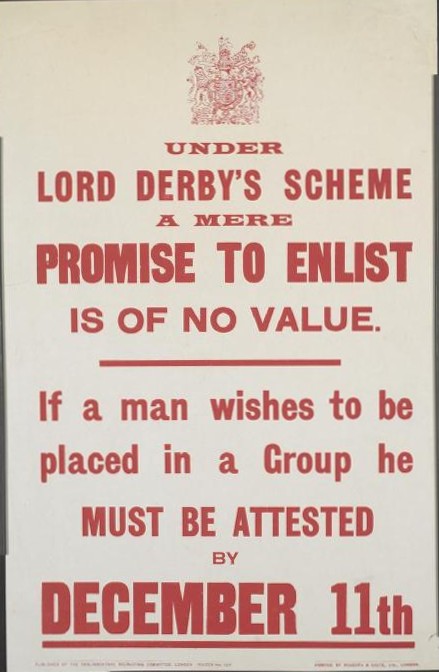
Derby Scheme poster of November 1915
Every eligible man aged 18 to 41 was visited at home by an appointed canvasser to ‘persuade’ them to ‘volunteer’. The men were told they were in “a country fighting, as ours is, for its very existence” and were asked to state clearly whether they would or would not attest to join the forces. No one was permitted to speak for them.
Those who agreed to attest had to promise to present themselves at their recruiting office within 48 hours, while some were accompanied there immediately to make sure.
James attested on 9th December 1915, having passed a medical, and would have received a 2s 9d (about 14p!) ‘signing bonus’.
Had he not done so, he would have been conscripted anyway, as the government introduced compulsory conscription on 27th January 1916.
The scheme successfully obtained 318,553 medically fit single men.
It was not until 1917 that James was called up. He presented himself for a medical on 29th January 1917 and was mobilised on 5th March 1917, initially posted to the 3rd Battalion of the South Lancashire Regiment, based at Crosby near Liverpool.
Following his training he was posted to France on 20th June 1917.
On landing in France, he would have been directed to the Infantry Base Depot for assignment. Although he was part of the 3rd Battalion South Lancs, there was no guarantee that a new draft would reach the Battalion he was serving with. If another Regiment had recently suffered severe casualties, new drafts would be sent where replacements were needed. This was the case for James, who was sent to the 13th Battalion Cheshire Regiment, fighting at Westhoek Ridge, as part of The Battle of Passchendaele.
Conditions on The Battlefield
Anyone arriving at the battlefield would be shocked by the conditions. Shelling and rain gradually churned up the battlefield into deep, slippery mud. Imagine mazes of communication trenches, crowded with wounded and sometimes beaten soldiers, soaked to the skin and enduring at every turn shelling purposely intended to hinder their progress.
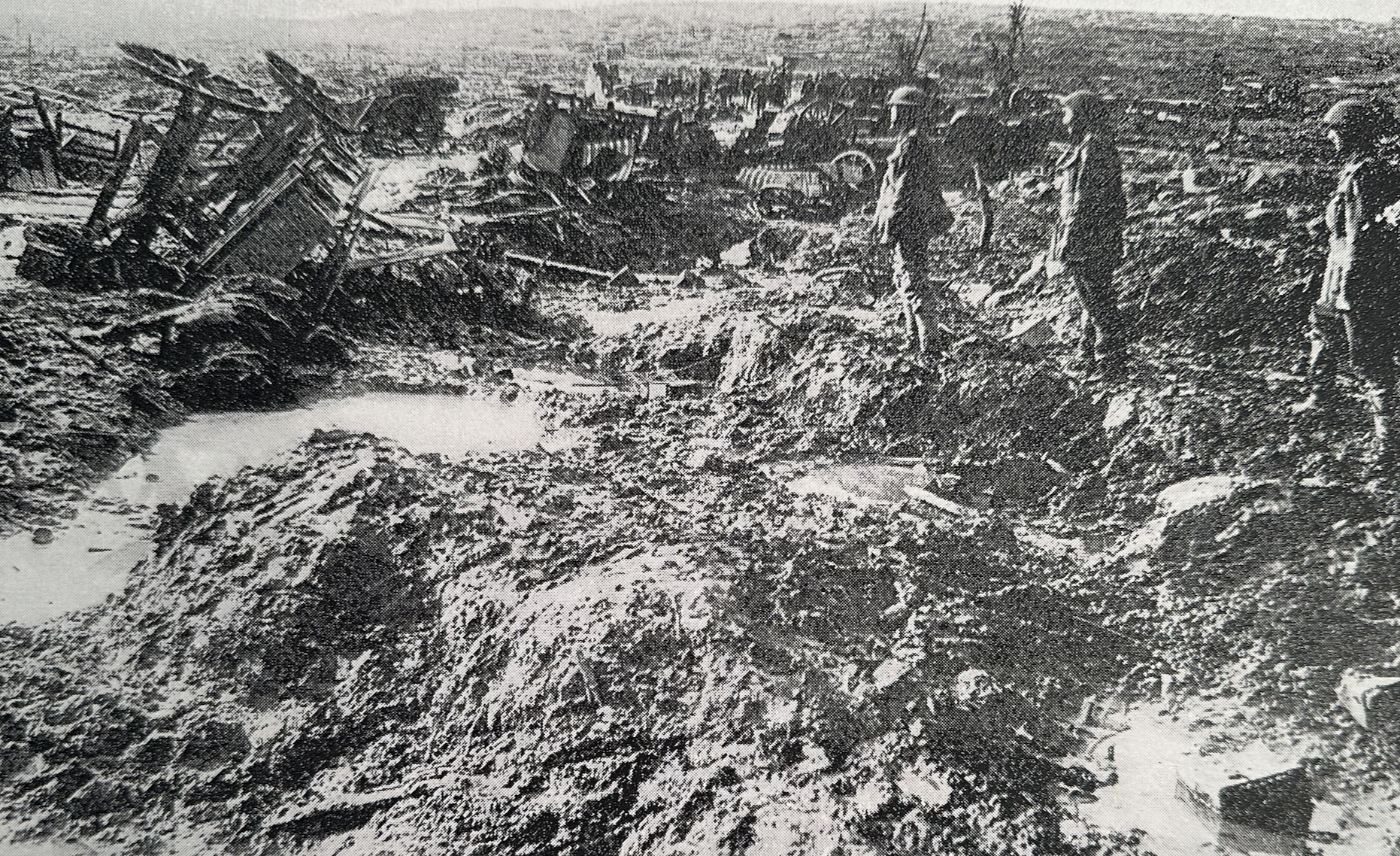
Photograph taken after the battle, 26th October 1917
The Battle of Passchendaele
Strategically, British forces were defending Ypres. Ypres was the last objective before the German’s reached the coast, and defending it was vital, “whoever wins Ypres wins the war”.
To help you get your bearings, here’s a map, the red pin marks the site of the battle:
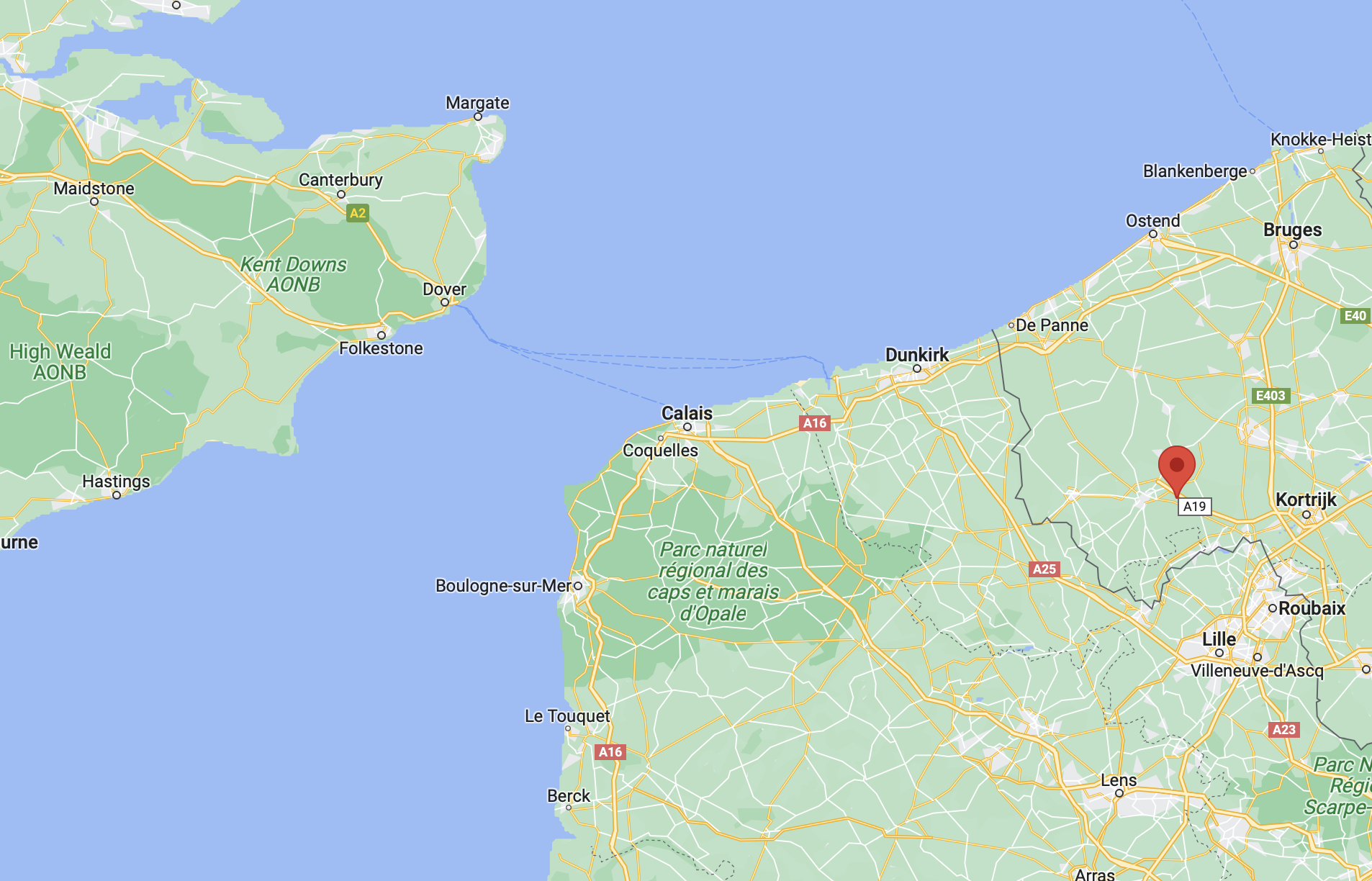
The battle took place to the East of Ypres:
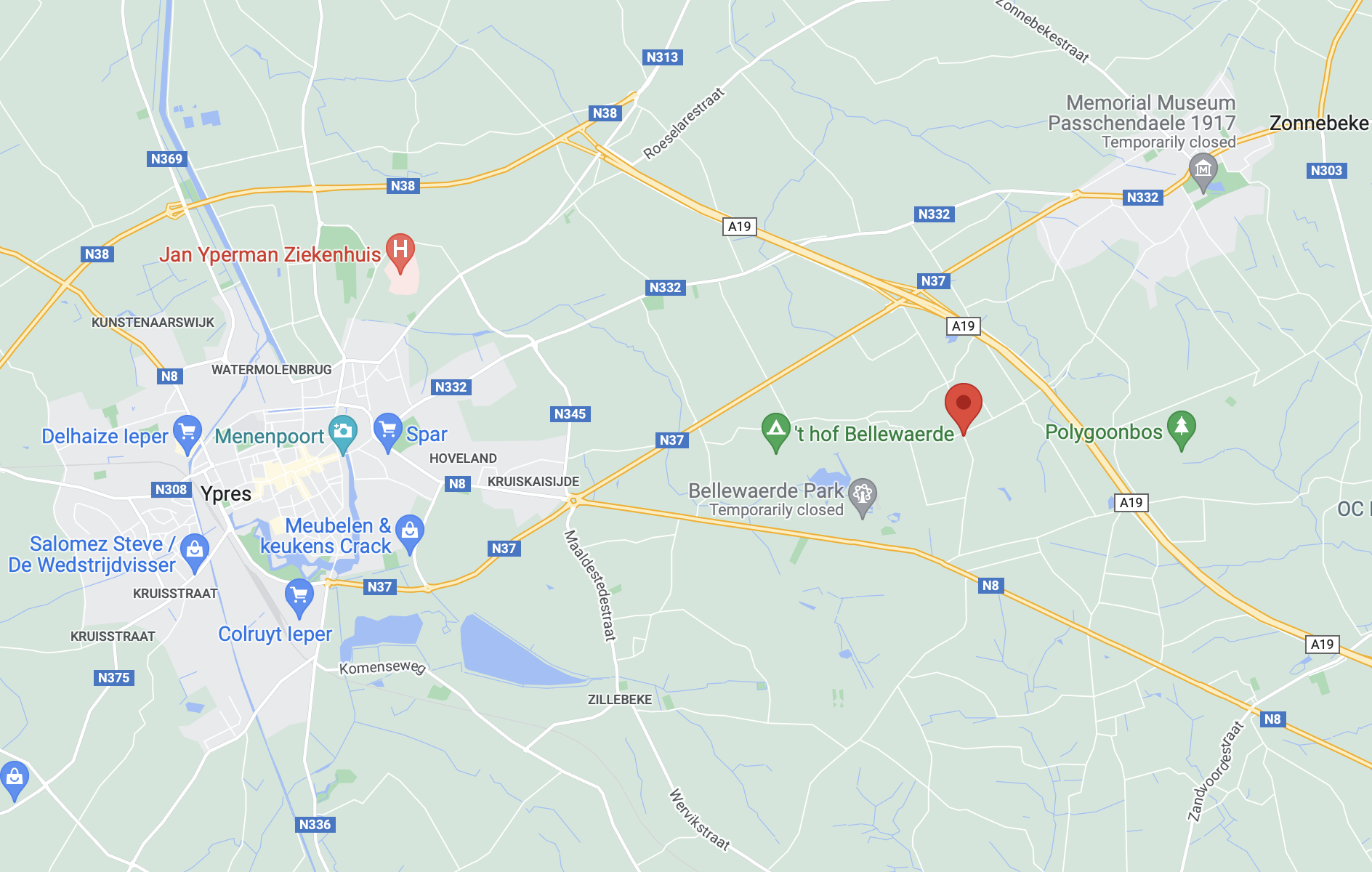
James’ 13th Battalion were engaged on 10th and 11th August 1917 in a successful battle to capture the West Hoek Ridge. The Battalion advanced at 4.30AM and initial waves made it to the objective with little initial response from German forces. They eventually retaliated by shelling no-man’s land, and we believe that some shrapnel hit James, severely injuring his leg leading to his death.
It had been James’ practice to write long letters home to his wife, Annie, in small, neat handwriting. We don’t have these letters, but the last page of his last letter remains, his usual neat writing replaced by clumsy scrawl:
“August 11, Lying in a field. One leg off. Doll”
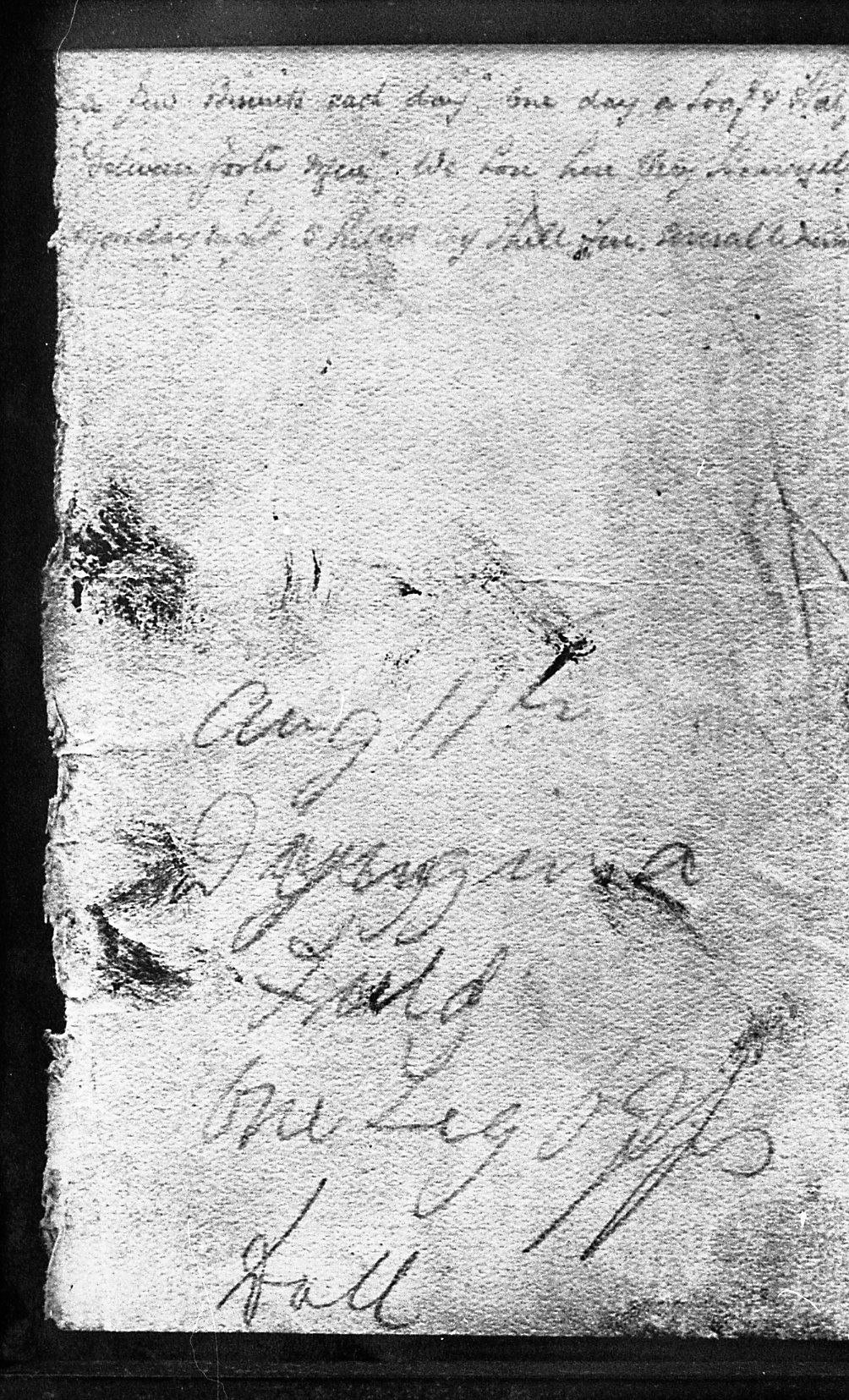
The remains of James’ last letter home, 11th August 1917
After the battle, the dead were simply left where they were, and covered with mud and soil.
Chris has carefully researched the battle and visited the site. We believe that James was initially buried here:
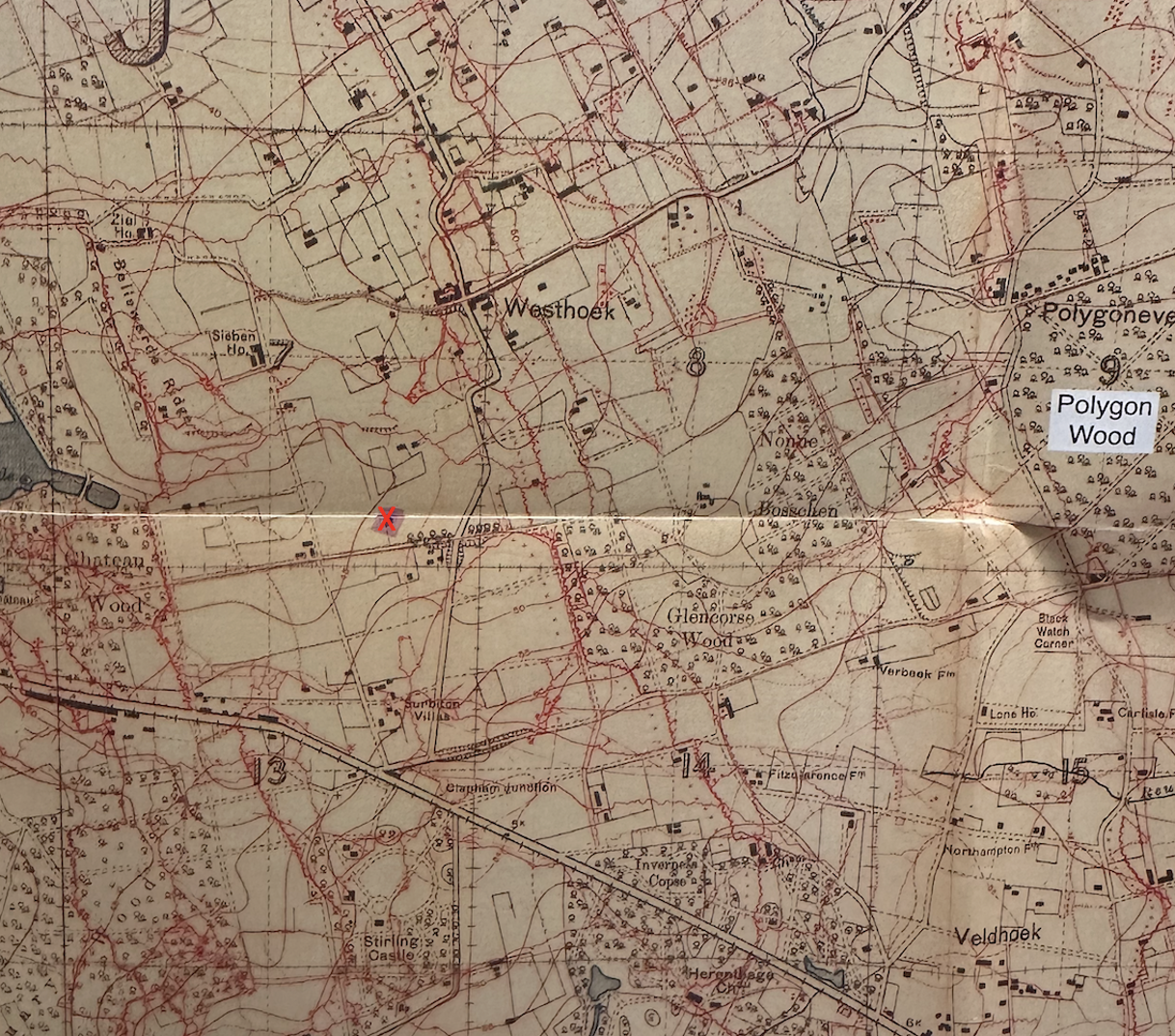
X marks the location where James’ was intially buried on the battlefield
For anyone interested a more detailed account of the battle can be found here.
His wife would have been notified that he was missing in action and this report was published in the local paper:
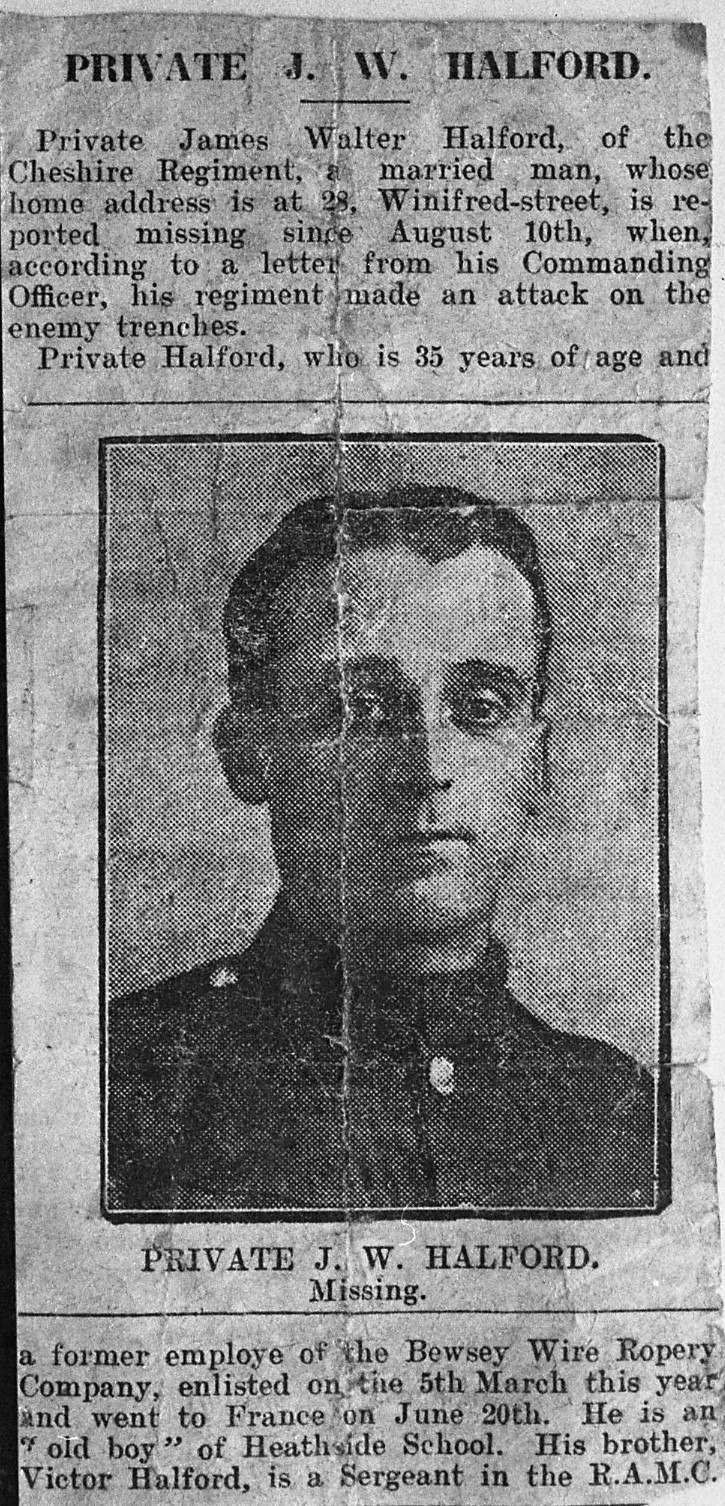
Local newspaper article reporting James missing in action
At the end of the war, prisoners of war were used to search battlefields for the bodies of fallen soldiers. In 1919 many of James’ Battalion were recovered but for some reason James himself wasn’t found.
His body was finally found in March 1921, we assume by a farmer working the land. He was exhumed on 14th March 1921 and buried at Tyne Cot Cemetery near Ypres, the largest cemetery on the Western Front.
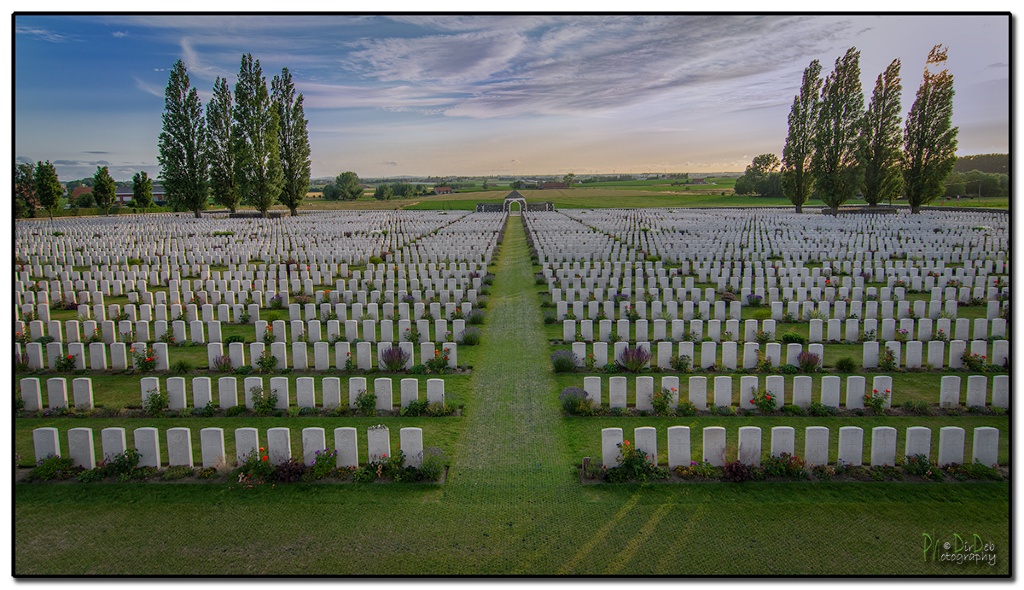
Tyne Cot Cemetery in Belgium
James was awarded two World War One campaign medals, the British War Medal and the Allied Victory Medal. These along with a large round Bronze Memorial Plaque and a Memorial Scroll would have been sent to family following the war to his next of kin.
The photos show just one of those medals, the British War Medal.
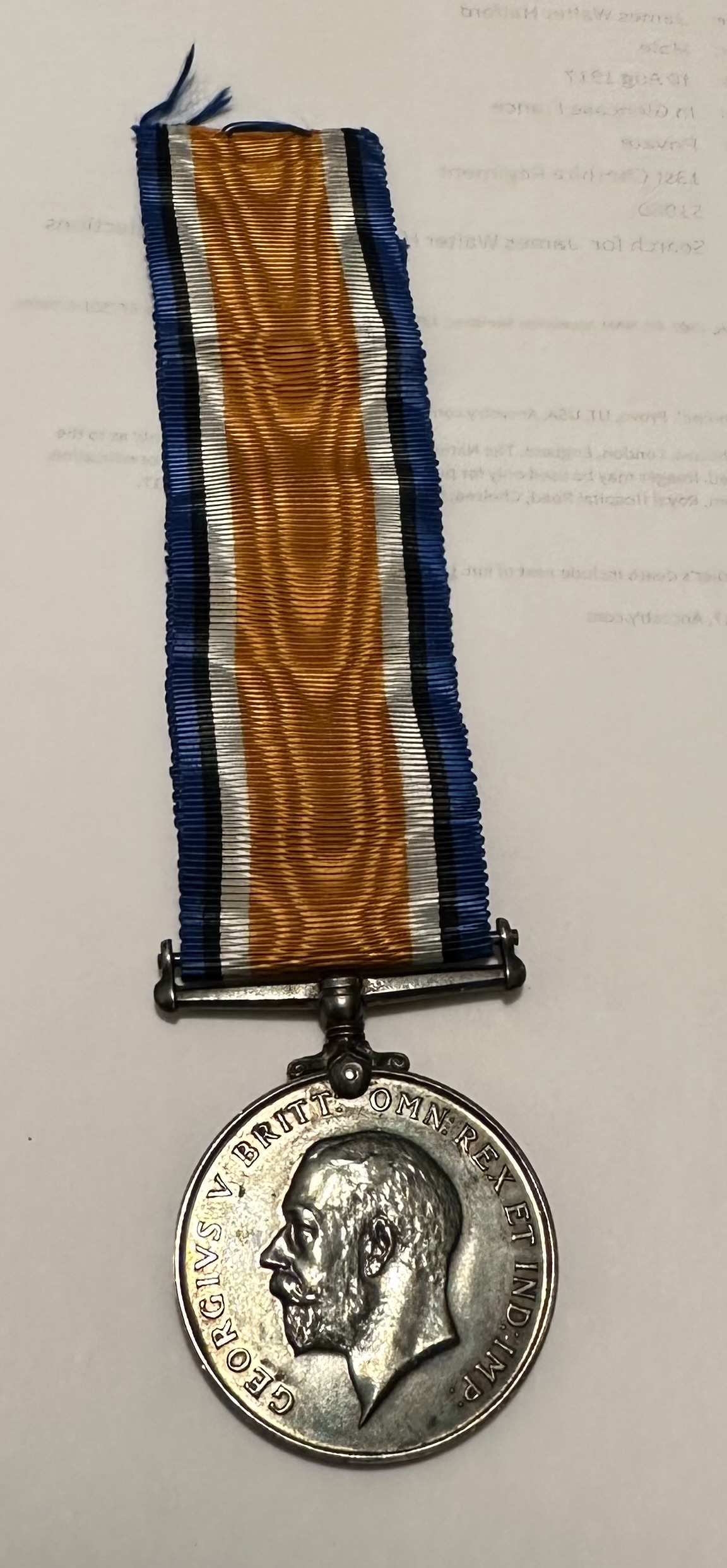
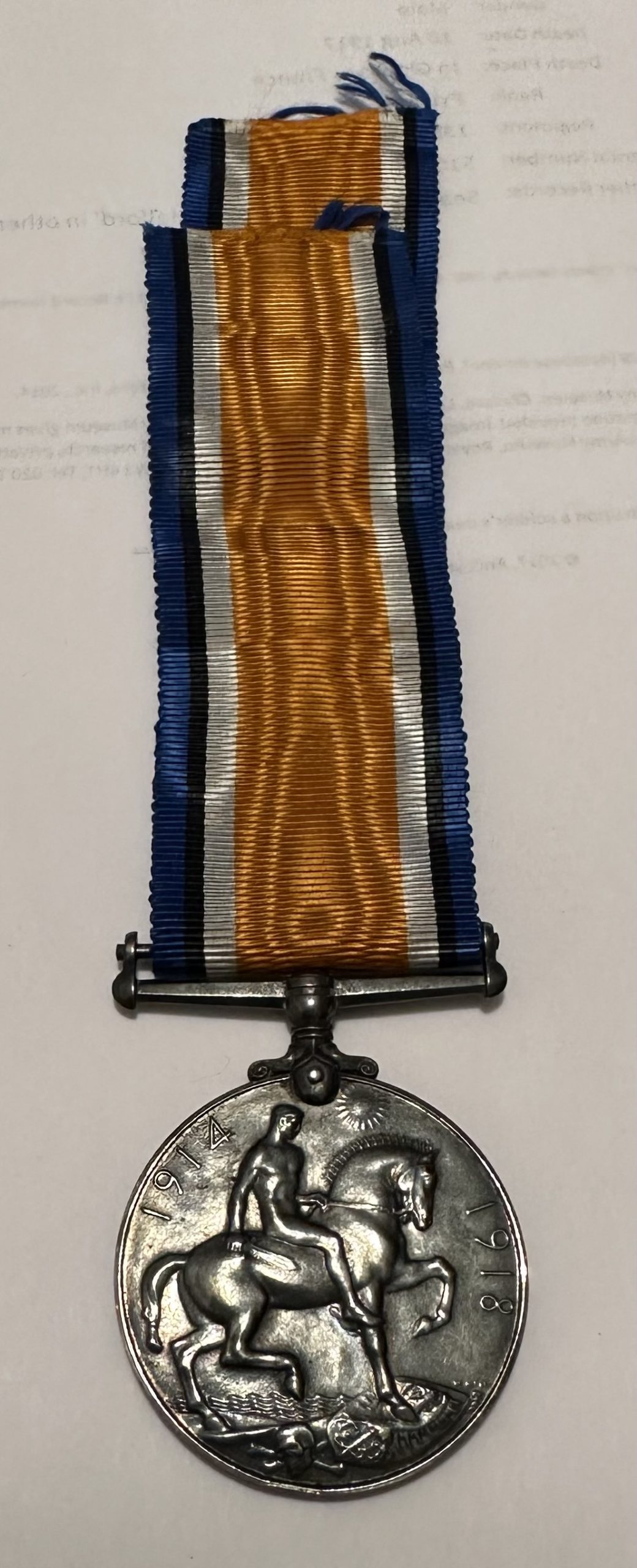
We also have James’ identity disk. These disks were made from fibre, rather than metal, and as a result tended to decompose when in the ground, as this one has.
You can just make out “3 SL” (3rd South Lancashire) and his regiment number 40472.
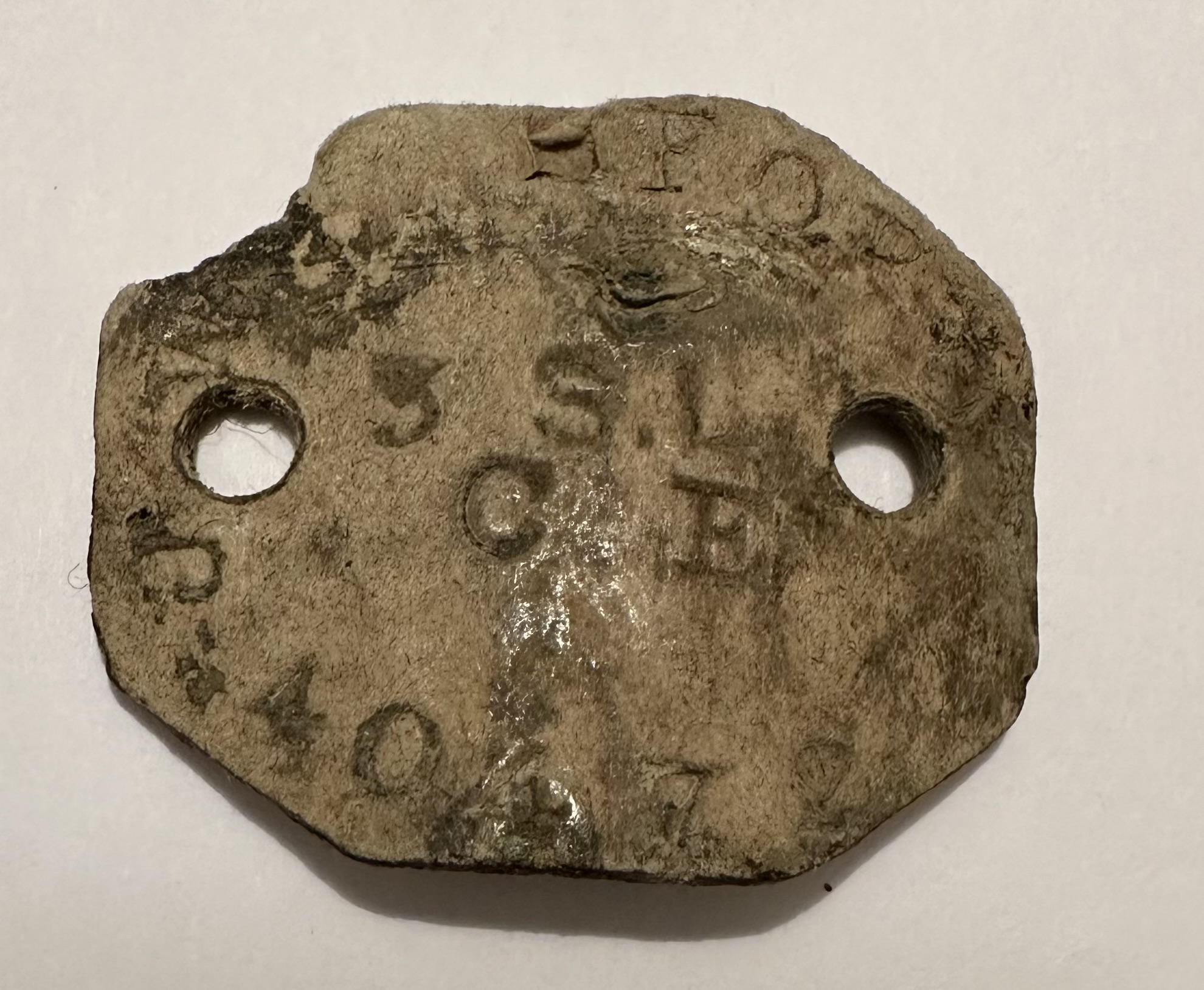
James’ widow, Annie, remarried after the war taking the name Holbrook.
The Holbrook family still have the original letter from Uncle Doll, his Allied Victory medal and his Death Penny (or Death Plaque). Chris bought the medal that we have and his id tag on ebay when someone in the family sold them to a dealer. Chris had subsequent conversations with the family about selling James’ other effects but they are unwilling to do so.
